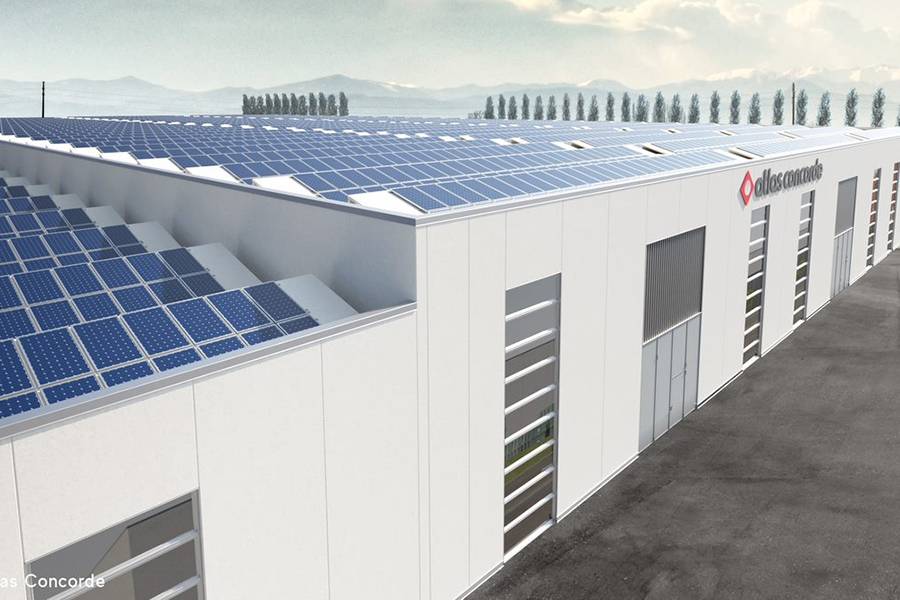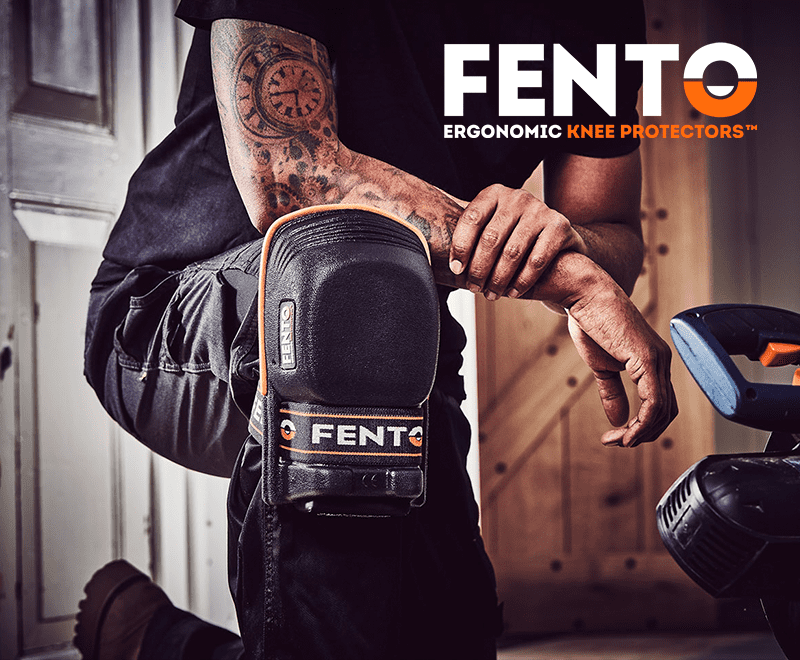For years, European tile manufacturers have carefully balanced the twin priorities of profit-making and sustainability. Recently, however – particularly with the increasing prevalence of high-volume, lower-price alternatives – it has become vital for these manufacturers to market their sustainability efforts just as much (if not more) than their products.
To see how this is impacting tile manufacturing, we need only look at the national associations of Spain and Italy, both of whom have published significant information about the environmental impact of their products in recent months.
Confindustria Ceramica The Italian association for ceramic tile manufacturers, Confindustria Ceramica, has recently released an Environmental Product Declaration (EPD) for the ceramic tiles and panels produced by its members. EPDs were established around 25 years ago, based on the ISO TR 14025 standard and designed to “signal a manufacturer’s commitment to measuring and reducing the environmental impact of its products and services and report these impacts in a hyper-transparent way,” according to the International EPD System. “With an EPD, manufacturers report comparable, objective and third-party verified data that show the good, the bad and the evil about the environmental performance of their products and services.”
Issued in January of this year (itself an update of the certification issued in 2016) the EPD held by Confindustria Ceramica is somewhat unusual, in that it covers a broad category, as opposed to a single product. According to the International EPD System website, the most common type is a single company, product-specific EPD – that is, a document which gives a life cycle assessment of one or more “very similar” products developed at a single factory or various factories employing identical processes. Companies can also achieve what’s called a Group EPD, which covers several products as long as they use the “same major steps in the core processes” and there is no more than a 10% disparity in the declared environmental performance indicators between the products.
The Italian association’s EPD, on the other hand, falls into the category of Sector or Industry Average EPD. This means that it provides an average life cycle assessment for companies and products in its category, rather than describing any one manufacturer. As such, the declaration is based on 74 companies across 87 plants, which are said to represent some 82% of Italy’s total ceramic tile production. The aim here, of course, is to provide an overall impression of the country’s standards and products, rather than to recommend specific manufacturers as more or less sustainable.
The take-home message
The document, which is available for anybody to read online, is extremely dense and detailed, but several key points are important to highlight. Firstly, the overall standard of health and safety for workers during manufacturing seems to be very high. Per the document: “Workers… receive appropriate training and personal protective equipment. Confindustria Ceramica promoted the adoption of health and safety practices agreed with the Trade Unions and HSE local authorities.” The organisation has also reportedly promoted the adoption of studies and guidelines on environmental management to help member companies improve their performance.
With regards to energy usage and the immediate surrounding area of the sites, the declaration states “contamination of water and soil does not occur”. The companies reviewed instead recycle the total amount of waste water during the drying process in the form of steam, or they internally treat it for reuse. For energy production purposes, the declaration states only natural gas is burned. Emissions from these combustion processes “are under strict limits and monitored,” while protection measures are also employed. According to the report, a “broad number” of companies also use self-produced electricity via cogeneration and solar panels.
Relating to installation, the declaration states: “During the installation, no emissions occur and no health or environmental risks derive from ceramic tile installations.” Of course, this point applies to most, if not all, tile installations, and is a point in favour of the sector as a whole. Similarly, the environmental impact of tiles once installed, as well as their potential service life, paints a positive picture for ceramics as a sustainable building material.
Ceramic is described in the declaration as “intrinsically inert, chemically stable”. As such, it continues, “during the use stage, [ceramic] does not emit any pollutants or substances which are harmful to the environment and health such as: volatile organic compounds (VOCs) and Radon”. Moreover, it’s suggested that the potential service life of tiles is “generally higher than 50 years,” which naturally results in far fewer installation-related emissions when compared to materials with much shorter lifespans.
Looking at the sector’s emissions throughout the manufacturing process, it is unsurprising to learn that the majority of its Global Warming Potential (GWP) is contributed by energy processes and raw material consumption for ceramic mixtures, at 72% and 18% respectively. It is encouraging to note, then, that many Italian manufacturers are exploring and implementing more sustainable energy production at their plants, utilising renewable solar energy.
Active initiatives
Ceramica.info is a web portal created by the Italian ceramics industry to highlight and promote its companies to the global tiling market. Here, we can see even more of what the Italian sector is doing in the area of sustainability, which the site organises into five categories: process, people, products, projects, and planet. The portal highlights relevant news items and industry developments from its members, showcasing how individual companies are pushing their environmental initiatives forward. This includes highlighting when companies have achieved certification according to ISO standards, or case studies which particularly prioritise sustainability.
Additionally, the portal provides broader guidance and materials for architects, installers and dealers. For example, it highlights ISO 17889-1, which is described as “the first international standard to evaluate the sustainability of ceramic tiles on the basis of 38 environmental, social and economic performance indicators”. According to the organisation, a tile can only be considered sustainable if it reaches a score of 117.5 out of 130 according to these indicators. Italian tiles “amply” exceed this, at a sector-wide average score of 124.
Ceramica also highlights a life cycle assessment study carried out by the Department of Engineering of the University of Modena and Reggio Emilia, which evaluated the environmental performance of several different floorcoverings based on a cradle-to-grave approach. While it is always important to carry out further research and maintain reasonable scepticism, the results of this research suggested that Italian ceramic tiles had a lower overall environmental impact than marble, linoleum, resin, carpet and parquet.
ASCER
ASCER, the Spanish association for ceramic tile manufacturers, is equally keen to trumpet the environmental benefits of its country’s tile output, having published its own sector-focused EPD in 2019, as well as a series of reports for both consumers and design professionals. According to the R&D section of the ASCER website, the industry is aiming for net zero greenhouse gas emissions by 2050, a goal which aligns with both EU and UN directives. To meet this goal, the report for industry professionals reads, “the ceramic tile sector has been making technological and innovative improvements to its production processes to achieve results that go beyond reducing its carbon footprint. Its goal is also to optimise processes in other areas, such as raw materials and water management.”
These measures are said to include waste heat recovery, replacement with more efficient burners in furnaces and the consequent reduction of gas consumption, higher efficiency furnaces, higher efficiency cogeneration systems and the use of natural gas, which the report describes as the “cleanest fuel currently available”. With the continuous development of technological improvements in energy efficiency, ASCER says, the total CO2 emissions of the Spanish ceramic tile industry per ton of fired product have reportedly been cut by 60% since 1980.
One area in which this technology-based approach is seen is the management of waste material. The organisation estimates that prior to firing, 100% of clay waste is reused, while the 20% of water which isn’t evaporated completely during production is reused as part of a closed system, meaning the wastewater discharge created during the manufacturing process is “close to zero”.
Moving in circles
ASCER’s sustainability efforts focus significantly on the idea of the “circular economy,” a concept which aims to eliminate waste and pollution from design, regenerate natural systems, and maintain products and materials already in use. “In other words,” ASCER’s report says, “the circular model seeks to design durable products, where materials and resources remain in use for as long as possible. In addition, it aims to minimise waste generated and increase materials reuse, recovery and recycling strategies. Therefore, when a product ends its life cycle, it can be used as a nutrient or raw material in the life cycle of another product.”
This focus on durability and the length of service for products makes a great deal of sense, when considering that, according to the European Commission, the building and construction sector is responsible for more than 35% of CO2 emissions in Europe. In this light, the ability of ceramic tiles to remain in place and effective for half a century is even more potent, significantly cutting down on the use of virgin raw materials as well as the emissions associated with their processing.
At the end-of-life for ceramic products, ASCER admits, their potential for recovery and recycling is heavily dependent on how efficiently it is collected, sorted and separated from other construction waste, dust and residues. With this in mind, then, the organisation advocates for measures to improve the separation of waste products when buildings are demolished, an effort it says is “key to exploiting the circularity potential of ceramic tiles, as well as to increasing the circularity potential of the whole construction sector”.
Going further
As was found in the Italian EPD, the Spanish tile sector sees the vast majority of its emissions occur during the A1-3 phases of the life cycle assessment, which represents the extraction of raw materials, transport and manufacture of the product. In its reporting, ASCER discusses a number of initiatives implemented by the sector to specifically target these phases and reduce their impact. As previously mentioned, the industry has been able to reduce CO2 emissions per sqm produced by 60% compared to the 1980s, and total CO2 emissions by 24% compared to the 1990s. However, to meet EU targets, the organisation has several planned developments set to take place in the coming years, which are designed to reduce the sector’s overall emissions even further.
One such planned initiative is the replacement of all natural gas with low-carbon fuel sources such as green hydrogen or biofuels. This is favoured as its implementation would require less transformation of the equipment than if the entire production system were to be electrified, ASCER suggests.
“Biomethane obtained from biogas has a number of advantages, as the same circuits used for natural gas could be used and the production process would not require any adaptation. However, it is not yet considered a realistic option in the short term, due to its lack of availability, limited production capacity and lack of sufficient political impetus for its deployment nationally.”
Alternately, the organisation suggests manufacturers should invest more heavily in on-site renewables for the self-generation of energy. In the short term, this could be supported with the purchasing of electricity from certified 100% renewable sources.
It’s clear that, like all construction and manufacturing, the global ceramics industry needs to reduce its raw material usage and energy consumption in order to minimise further damage to the environment. These reports from the tile manufacturing centres of Europe, then, are encouraging to see, particularly in how they position sustainability as a collective challenge, which all parts of the supply chain can positively impact. As the ASCER report says, in describing the “great circularity potential” of tiles: “The collaboration of all actors involved is crucial to decarbonise the sector and enhance the product’s circularity. The benefits will be multiple and on a large scale.”
www.portal.ascer.es
www.ceramica.info








